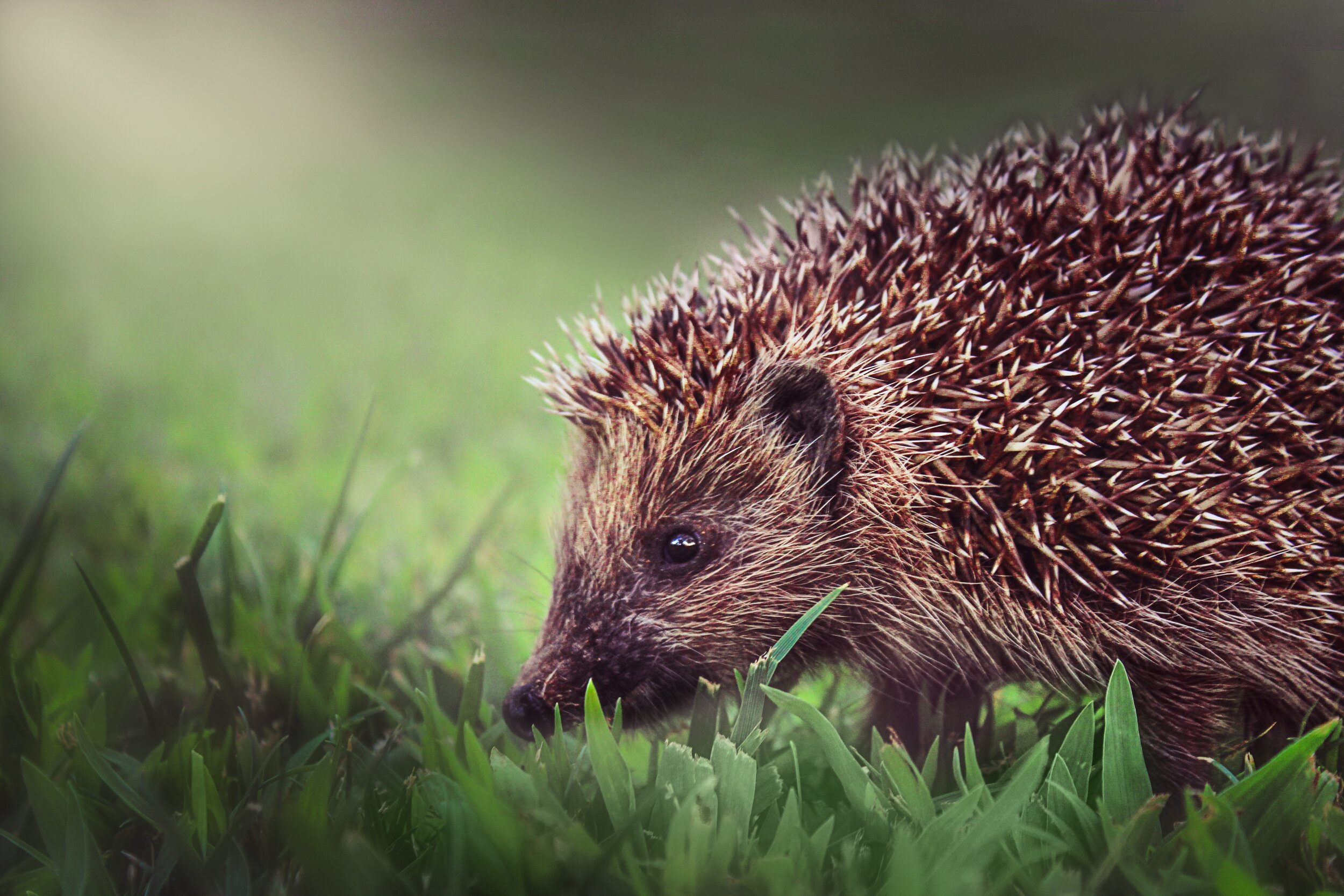
Hedgehog FACTS
Hedgehog FACTS
THE EUROPEAN HEDGEHOG.
A protected, unique and unmistakable mammal, that used to be in abundance in Britain. Around 35,000,000 in the 1950’s now less than 1,000,000 thought to be left and they are classed as venerable to extinction.
It is ILLEGAL to keep a wild hedgehog as a pet and SHOULD NOT BE LOOKED AFTER BY ANYONE WHO IS NOT TRAINED TO DO SO.
You usually only see a hedgehog when it is really sick, out in the day and needs professional help ASAP.
Nocturnal insectivores, that are rarely seen, but much loved by the British public.
They are non-aggressive, quiet solitary mammals that roam the gardens and countryside looking for food and water.
They are wonderful creatures, have different personalities and some are real characters! We never handle them or treat them as pets. They are in a rescue for the shortest time possible to treat and then release back to the wild.
An adult on average weighs around 750g and is 24cm long. Lives for about 3-7 years, has around 5,000-7,000 spines which are very sharp, brown with a pale tip. Each spine has its own muscles and can move independently, there is a large thick muscle around its skirt (where the spines end and fur begins) which can contract very quickly to pull its body into a round spikey ball as a defence method.
Males are born and seem to think of nothing else than mating, will push each other around and can fight. Sexual maturity 8-10 months. They will circle round a female huffing and puffing, following her about until she accepts him.
Females usually have a first litter of hoglets around May/June and any time through the Summer. Some have a second litter born in September.
Hoglets are born on average 35 days gestation. Blind, deaf and no spines. Within a few hours white soft spikes push through their skin. Brown spines come through after 5-7 days, after 10 days their eyes open and 2 weeks they can hear. When about a month old, the mother will take them on excursions around the nest area showing where a water source is and how to find insects.
7/8 weeks old she gradually leaves them and they are around 250g in weight.
When a hedgehog has a second litter in September, then at 7 weeks old leaves them, they will struggle to find food, can't put on enough weight to hibernate and will probably die if left in the wild. These are the Autumn juveniles that hedgehog rescues gets brought and are looked after until they reach 650g, then they usually can survive hibernation. They stay at the rescue and when they fully wake up in Spring get released back to the wild.
The biggest part of their diets are:
Beatles, caterpillar, larvae, worms and type of insect that is at ground level. They will eat dead birds, frogs, baby slow worms, baby rats, a small number of slugs and snails. They are often seen under bird feeders as bits of fat balls fall down, mealworms (which although they love and will eat) are very bad for them, and can cause Metabolic bone disease, stripping calcium from their bones.
They would, if hungry eat crushed peanuts and sunflower hearts, from the floor under bird feeders, ripe berries, fallen apples (more to find the insects in them) but this is not their diet and should NOT be fed to hedgehogs.
They can carry diseases that we can catch, so GLOVES or a folded towel is always recommended for handling a hedgehog even if it’s a hoglet.
They can be found with ticks on them. If only a few, they will drop off and not cause the hedgehog a problem. If more than 5 can be seen and there could be lots of tiny ones, these need removal by a vet or a rescue. If you pull them off it can cause more problems.
A myth is that all hedgehogs have fleas. They may have one or two but do not live on your pets, or you, or in your house. We very rarely see fleas.
If a hedgehog is really sick and has been laying on the ground for some time, they seem to get fleas, ticks and flies buzzing around. This all shows a very sick dying hedgehog that needs rescue/vet ASAP
There is so much more to know and learn about hedgehogs.
